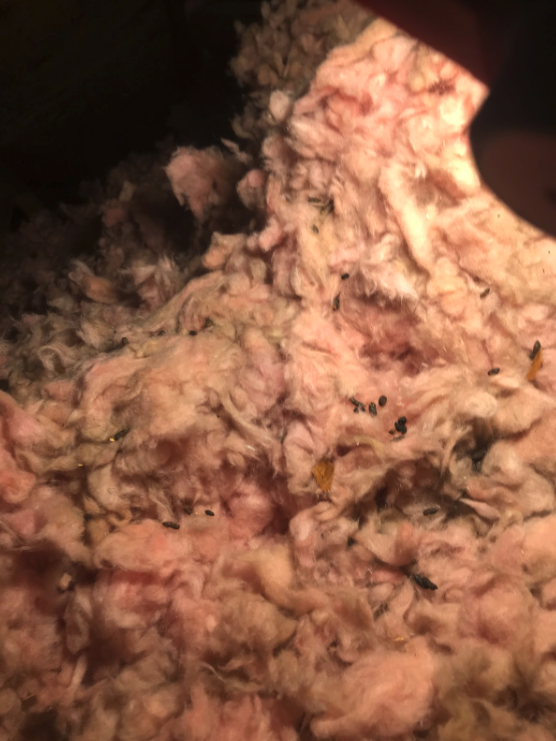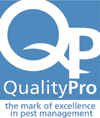Insulation allows our structures to retain warm or cold air, and is vital to any home or business in northern climates. How much insulation you need depends on where you live.
What does R-Value Mean?
The term R-Value refers to the resistance value of your insulation, or how efficiently it can regulate temperature and retain heat. In arctic climates like Alaska one may need an R-value of 49 or above, while Floridians are required to have a minimum R-value of only 30 or above. Typical R-values in the Twin Cities homes are more in the neighborhood of 49 and above.
Rodents, wildlife and bats can do serious damage to your insulation, whether it be in wall voids, attics or floor voids. Rodents will tunnel through and remove nesting material, while wildlife will trample it and all species of invaders will contaminate it with their droppings.
 When it comes to insulation, when it is trampled, tunneled, or missing, it can lead to the following consequences:
When it comes to insulation, when it is trampled, tunneled, or missing, it can lead to the following consequences:
- Lowers R-value: Compromised insulation thickness leads to decreased energy retention and increased cost.
- Creates potential for water damage: Lower heat retention leads to snow melt above the affected area, leading to melting then freezing lower down. This refreezing is observed as ice dams, whose weight can damage your roof, gutters and soffits. Water damage in these areas can open the door for Carpenter Ants to create a satellite nesting location, a phenomenon frequently noted by our wildlife technicians..
While the above consequences may be one of the main damages your home experiences, contaminated insulation poses other threats. Here are a few items to note if your insulation has been contaminated:
- Odor: The smell of urine and dead animals can be “soaked up” in insulation. Temperature shifts over the year lead to changes in the internal environment, allowing odors to fluctuate and persist.
- Mites & Ectoparasites: Bat bugs, bird mites, and rodent mites can become an issue when organic materials remain to be fed upon. Once those run out, mites and bat bugs seek new hosts, possibly including the residents of the structure. There are more mites in the warmer months, but they are not always present. This development is neither rare nor common, but does occur regularly.
- Bacteria & Zoonotic Diseases: rodents, wildlife and bat infestations have the potential to carry various bacterium and zoonotic diseases such as hantavirus, leptospirosis, and salmonellosis.
- Pheromone Presence: These trails of chemicals left by previous infestations are detectable by other animals, potentially enticing a new infestation.
Once the insulation has been trampled, tunneled, removed, or contaminated, it must be removed in order to create a safe living environment for homeowners. The entry points and accessible structural elements affected by droppings must then be disinfected and encapsulated before new insulation can be placed.
If budget allows, exposing all affected structural elements for full disinfection and encapsulation is preferable. Homeowner’s Insurance claims will sometimes cover these remediation expenses in the instance of raccoons and bats.
Disinfecting & Remediating Wildlife Damage
Disinfection:
See Here for information about proper disinfection methods.
Removal of Insulation:
When performing attic cleanup work, individuals should utilize proper PPE such as Tyvek suits with full-face respirators and gloves. An air scrubber with negative air pressure and a HEPA filter should be deployed in the attic space, while attic access areas are sealed off to reduce the risk of contaminants entering the living space. An industrial vacuum system with vacuum hoses should also be fed into the space via extant attic penetrations (vents, entry points, etc.). This enables the removal of guano, droppings and contaminated insulation, which is bagged and placed in an on-site dumpster.
Encapsulation:
In the instance of having raccoons and bats invading your attic or soffit areas, interior structural elements will be painted over with a covering that will lock in built up odors. This traps bacteria and zoonotic diseases between the structural element (trusses, support joists, etc.) and the covering, which results in protecting the home’s residents from direct contact and disease spread.
Re-insulating:
New insulation, drywall, and other items removed during this process can be replaced once disinfection and encapsulation are completed. This will generally require hiring a different set of contractors to complete this work.
 Need Wildlife & Pests Out Of Your Home?
Need Wildlife & Pests Out Of Your Home?
If you are a Twin Cities, MN resident and have an issue with pests or wildlife and compromised insulation, give Abra Kadabra Environmental Services a call today to schedule an appointment with one of our experienced pest and wildlife technicians.








